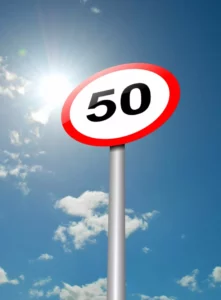In October, ARSTM published ‘Guidance for the use of Portable Traffic Signals’, a long overdue revision to current industry standards on delivering traffic signalling for temporary works. TGS has made a wide range of contributions during the consultation period, many of these based on experiences deploying the Metro and Evo1 products. Here we share our Top 5 Takeaways from the Guidance and how it applies to our range of solutions and services at Traffic Group Signals.
- Streamlined Reference and Clarity: The GUPS consolidates diverse guidance and laws into a single accessible document, simplifying referencing for quicker access to information, especially for on-site operatives. It clears up terminology, distinguishing between portable and temporary signals and their capabilities with precise details. This should enable traffic management professionals to make informed decisions about which signalling technology is most appropriate for the application and the correct methods for deploying it.
- Defining Best Practices: Offering an industry-defined benchmark, the GUPS allows for the ongoing evolution of best practices concerning portable signals, providing a platform for consensus-building and communication. It will support the upskilling of the industry and the extension of training currently provided, while enabling traffic management companies to realise the full benefits of our products, through a greater understanding of how they should be deployed and configured. Although not directly deploying TM schemes, TGS benefits from the guidance during on-site risk assessments, particularly in deploying the Evo1 Pro and Metro Pro systems, drawing from experiences with Metro and Evo1 products. The GUPS provides a useful reference point for operatives, supporting them to make better informed operational decisions when on-site.
- Safer Roadworks For All: Pedestrian and cyclist timings are a welcome addition, where previous guidance and training focused on vehicles only. This will ensure that roadworks consider the most vulnerable road users, making sites safer, more accessible and better supporting more active modes of travel. To support the adoption of the Guidance, TGS provides timing tables for ease of access under the flaps of our products and has built a lookup into the timing tables within our scheme design software, Signal Studio. There is also the timely inclusion of setting timings for sites within 20mph zones, a necessary consideration to ensure there is sufficient time to clear the site without exceeding the speed limit.
- Product Implementation Measures: TGS has integrated measures aligning with the Guidance into their products. This includes ensuring compliance with legal requirements for pedestrian crossing modes, clear identification of datum red times and innovative software that simplifies configuration while maintaining accuracy, going beyond prescribed guidelines to develop a Physics Model. This ensures our equipment already conforms to the latest standards, giving users peace of mind that our sites are designed in line with the Guidance.
- Documentation and Compliance: The Guidance recommends retaining a record of the signal controller settings along with commissioning and decommissioning times. Our Signal Studio software encapsulates detailed scheme configurations, allowing easy sharing and independent reviews. TGS emphasises proper documentation, maintaining an audit trail for changes and reviews. Additionally, automated checks within the software will align with new guidance from GUPS, ensuring compliance.
This Guidance also emphasises Active Travel, an area where TGS’s Evo1 Pro and Metro Pro systems are contributing significantly to enhancing the experiences of drivers, cyclists, and pedestrians by adopting advanced signalling technology, as highlighted in across our range of case studies and whitepapers.
For more information and to obtain your copy of the Guidance for the Use of Portable Traffic Signals, please visit https://www.trafficgroupsignals.com/gups/
If you have any queries around the guidance and how it applies to the TGS range of products, please get in touch with the TGS Professional Services team by contacting [email protected].



























